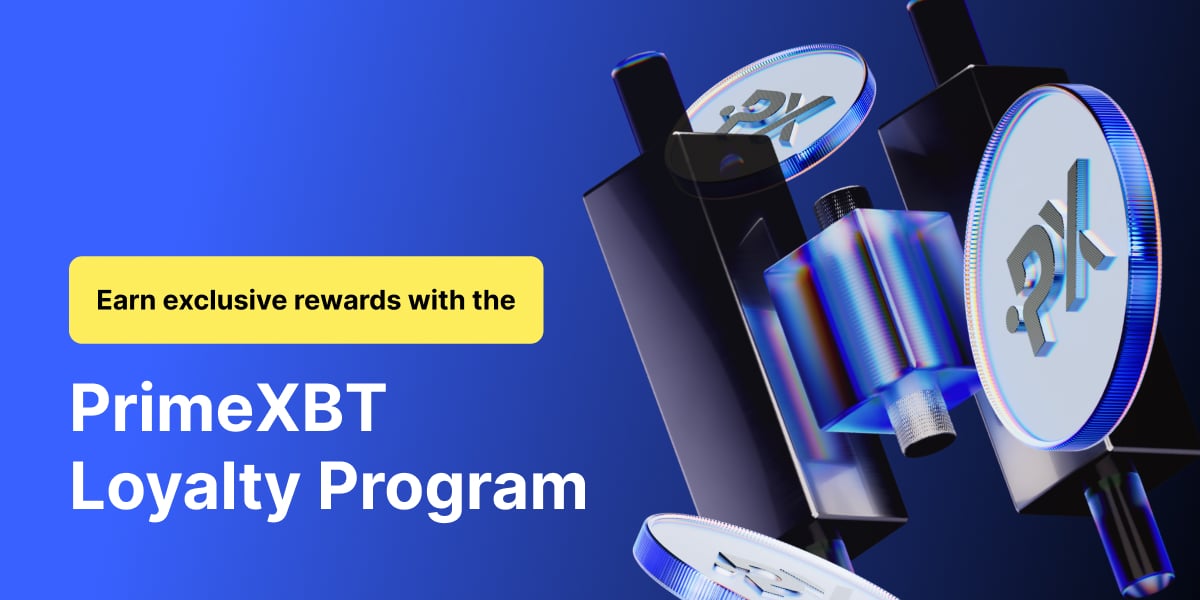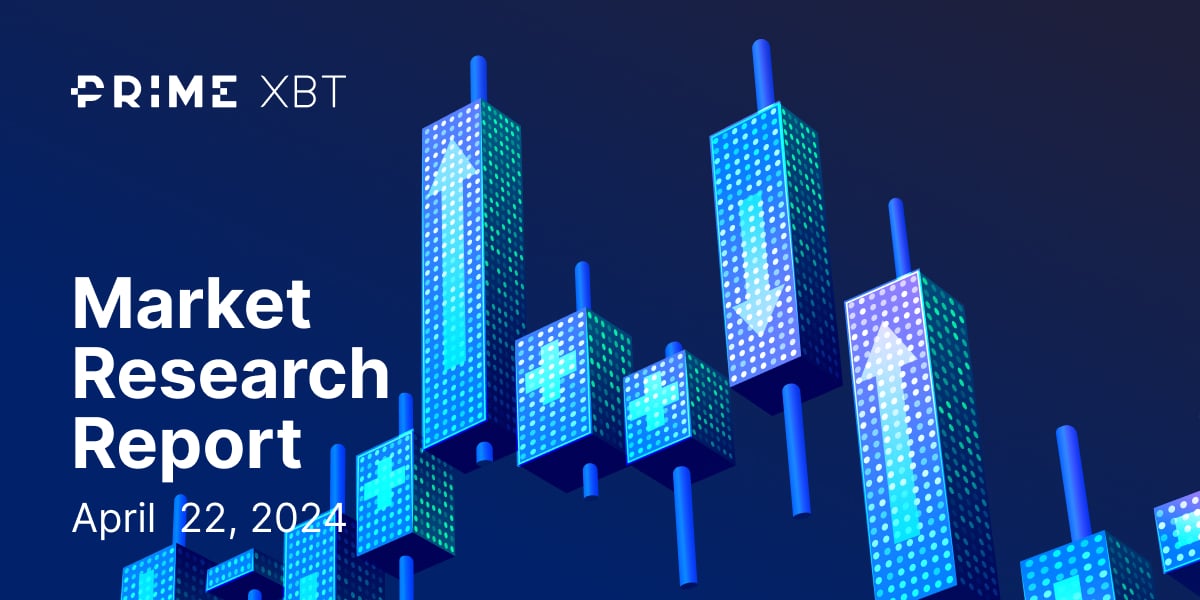Trading EOS involves speculating on the coin’s price fluctuations. If you opt to purchase EOS, it is with the intention of profiting from an anticipated increase in value. Additionally, it’s feasible to trade EOS via derivative instruments.
What is EOS?
EOS.IO is a blockchain network powered by its native token, EOS. EOS stands for Electro-Optical system, and it supports decentralised applications (DApps).
The EOS.IO blockchain aims to address the challenges commonly found in previous blockchain networks. It offers enhanced scalability, robust security, and minimal transaction fees. EOS.IO is committed to decentralization, ensuring that any updates to the software are determined through a democratic governance vote.
The EOS.IO network became very popular during its first years. It held the largest initial coin offering (ICO). Through the ICO, the network raised more than $4 billion from the sale of 1 million EOS tokens in just one year.
How does EOS work?
The EOS.IO protocol gives power to the token holders. The amount of power conferred depends upon the number of EOS tokens held. This system is known as the token ownership model.
EOS.IO also has a delegated proof of stake (DPoS) system that allows every participant (nodes) on the EOS.IO network to choose representatives that will run the blockchain. Transactions are made through the EOS token before approval via the DPoS protocol.
Token holders and ownership rights
The EOS.IO protocol runs through a token ownership model. This model gives block producers access to resources proportional to the number of EOS tokens owned or staked on the network.
Unlike most blockchain networks, EOS does not charge any transaction fees
Instead, the number of tokens owned by a block producer is used to facilitate the transactions. The number of free transactions a block producer gets is proportional to the number of EOS tokens held.
Every transaction completed on the EOS blockchain will create a unique block. On the network, one block is generated after every three seconds, and they are created in groups of 21 blocks. Creating blocks is exclusive to one producer at a time.
The EOS network has a high throughput, and it is estimated to process thousands of transactions per second. The high TPS comes without paying on-chain transaction costs, as EOS.IO is interoperable with multiple blockchains.
What is DPoS?
The delegated proof of stake consensus on the EOS network is where transactions are approved and added to the blockchain. The consensus responsibilities in the EOS network are given to selected users. Only 21 block producers are needed to edit a chain on the network.
The 21 block producers are selected through an election. Voting can be done by anyone who holds tokens on a blockchain that integrates EOS software. However, the strength of a vote depends on the number of tokens held and the date the vote was cast.
After the 21 block producers have been elected, their role will be to boost security on the network and approve transactions. A block producer is replaced with another if they are slow, fail to handle their roles or lose support.
EOS multi chain structure
EOS supports multiple blockchains to boost the performance and efficiency of the network. The side chains adopt the same software and token as EOS.IO. These sidechains work alongside the main network to create interconnected ledgers that can communicate with each other.
Many blockchain networks run on a single chain, but this could compromise speed and affect scalability. The multiple chains on EOS.IO solve this problem to allow Dapps to run on the network without any hindrances.
Through these sidechains, the network can handle thousands of transactions per second. Having only 21 block producers adds to the efficiency of the entire process.
What drives the price of EOS?
The price of EOS, just like the price of any other cryptocurrency, is highly volatile. The price of the token tends to fluctuate in an unprecedented manner. Several factors drive the price of EOS. These factors include the following:
Investor sentiment
The sentiment of the broader cryptocurrency market about EOS also tends to influence the prices. Positive news about EOS, such as the network having real use cases and a high level of adoption, can drive price gains, as the token is viewed as more stable.
If there is negative news about EOS, the token will dip, as this situation can create panic across the market. The cryptocurrency space tends to react significantly to market news, and you must stay updated.
Ensure that you are up to date with the happenings around the crypto space and developments related to EOS. This can help you predict the direction that the price will take.
Number of teams, developers and users on the network
The market price of a cryptocurrency tends to rise if there are companies that adopt the underlying technology. The adoption of the EOS blockchain can be in many forms, such as in decentralised applications (DApps).
If the EOS token can receive adoption from DApp developers, the EOS token could be primed for significant gains. The token can also gain adoption outside the crypto space. If financial institutions and traditional companies come out to show support for the EOS blockchain, the value would increase significantly.
On the other hand, the value of EOS will drop if the network and token fail to attract interest in the market. For instance, if there is increased regulatory scrutiny, the price of EOS will drop.
Token supply and circulating supply
Supply is a factor that influences the price of any asset, including cryptocurrencies. The supply of a token can help investors know if there will be enough demand to aid in future price gains.
When EOS was created, the total supply of tokens created was 1 billion. 20% of this supply was sold through an initial coin offering (ICO), while 10% was retained by Block.one. The remaining tokens have been added to the market periodically through ongoing sales.
EOS is an inflationary token. The supply tends to increase by 5% per annum. This nature of the supply of EOS tokens means that the real value is yet to be realised because the supply will continue increasing.
The fact that the supply of EOS tokens will keep increasing in the future does not resonate well with investors. Assets with a capped supply tend to attract investors because they believe there is potential for long-term gains as the demand grows. Nevertheless, if there is high demand, EOS can also grow.
EOS vs. other cryptos
The cryptocurrency space is very competitive. Blockchain networks fight for market dominance. The greatest competitor of EOS is Ethereum. The latter currently dominates in adoption by DApp projects.
EOS has major benefits compared to Ethereum. Ethereum usually suffers from slow transaction speeds and high gas fees. On the other hand, EOS offers a high level of scalability by providing users with high speeds and low transaction fees.
If the EOS network can attract DApp developers from Ethereum or any other blockchain, the value of EOS could gain. However, for EOS to become an “Ethereum killer”, it needs to make massive gains, as Ethereum’s market cap is significantly higher than EOS.
How to trade EOS
Trading EOS can be profitable when you have developed the right trading strategy to guide your decision-making. Having an elaborate plan about how you will trade helps you become proactive in managing risk.
Ways to trade EOS token
You can trade EOS by buying it on an exchange or taking a derivatives position. If you buy EOS through a cryptocurrency exchange, you do so expecting that the prices will rise, and you will make a profit.
To buy EOS through an exchange, you need to create an account. This process can be lengthy depending on the requirements needed by the exchange. Moreover, you might be charged fees to maintain your account or make transactions.
You can also trade EOS using derivatives products such as contracts for difference (CFDs). With CFDs, you enter into a contract to exchange the difference in EOS’s price from when the position was opened and when it was closed. The profit or loss depends upon your prediction of price movement.
CFDs will also give you full market exposure by depositing a few tokens. This is called leverage, and it helps in increasing your profits. However, it also increases your losses.
Stick to the plan
You need to create a trading plan that is unique to your needs. A trading plan should outline your goals. You can create daily, weekly or monthly goals that highlight what you want to realise from created positions.
Your trading plan should also highlight the assets that you are interested in. This will help you create a trading portfolio. If you are interested in trading EOS, you can choose to diversify your portfolio by holding other cryptocurrencies.
The trading plan also needs to calculate the risk you are willing to take. It should include the amount of capital you want to invest in EOS and how much of this you are willing to lose if a trade fails to go according to your prediction.
A trading plan should also define how you enter and exit trading positions. It should also include how you will trade EOS, whether through day trading, swing trading, scalping or position trading.
Consider and implement risk management
Due to market volatility, there is a high risk in investing in any cryptocurrency. Therefore, before venturing into the space, you need to develop a risk management strategy.
A risk management strategy will guide you in managing risk in your trading positions. It will also lower the risk of incurring unnecessary losses. One of the most popular risk management strategies is setting stops and limits in your position.
Open a trading position
The last step is to open a trading position on EOS. If you choose to trade EOS through an exchange, you buy when you predict a price increase, and you sell when you predict a dip.
Before making a trading decision, conduct ample market research and analysis. After creating your position, ensure that you monitor it and be up to date with factors that could trigger price changes.
What are the benefits of trading EOS?
There are major benefits realised from trading EOS. These benefits go beyond the possibility of making profits from your trading positions. The three notable benefits from trading EOS include the following:
DApps and interoperability
Owning EOS tokens goes beyond making profits by taking trading positions. Developers can hold EOS tokens to create applications on the network. However, you do not need to spend coins to use the EOS blockchain because all you need is proof that you hold them.
DApps created on the EOS network can interact with others created on other chains. The interaction between different DApps is a major benefit for developers because it allows them to move easily between chains. The process is so efficient that you might not realise you are using several DApps.
Cost considerations for transactions
The other benefit of trading EOS is the cost-effective nature of the network. Blockchains such as Ethereum charge very high transaction fees that deter developers from using their platforms. However, in the case of EOS, zero gas fees are paid to use the network, which fuels adoption.
The EOS network is also secured to support uninterrupted functionality. The high security of this network ensures that harmful software cannot be brought into the network. The security measures also protect from internal threats.
EOS also operates through a parallel processing mechanism that offers high scalability and increases transaction speeds. EOS ranks as one of the fastest blockchain networks.
Volatility measures and caps
The level of inflation for EOS tokens has been capped at 5%. This is the rate at which the supply of EOS tokens will grow annually. The level of growth is so small that it cannot trigger major price dips. Moreover, this increased supply helps accommodate the growth of the EOS network.
What are the drawbacks of trading EOS?
There are also disadvantages to trading EOS. Before you start trading any cryptocurrency, you need to assess the benefits and risks, because this helps you make an informed decision. The drawbacks of trading EOS include:
Reliabiltiy
For any project to achieve high levels of success, it needs to create trust with the investors. However, in the case of EOS, the level of trust is significantly low.
The founder of this project has been criticised for failing to achieve success in the other proof-of-stake projects that he has started. Some of these projects include Bitshares and Steemit, and they have both been accused of allowing insiders to create tokens for themselves.
These projects allowed those with insider access to print tokens with a high value for their own benefit. This is negative news for the EOS network that depends on a high level of user trust to achieve growth.
Vague details on the technical aspects of EOS network
There is a lack of in-depth technical specifics about the EOS network. The whitepaper for this project does not clearly talk about the technical specifics; hence the technical questions that users have remain unanswered.
Despite this, EOS.IO has a strong team of developers working on the project. This team wants to attract developers to build applications on top of the EOS blockchain, which could still aid in price gains.
Tips for trading EOS
If you have decided on EOS trading, consider following the following tips:
- Have a risk-management strategy. You can always expect volatility in the cryptocurrency space. Therefore, you need to be equipped with the right strategy to mitigate this risk.
- Set goals. Set realistic goals and profit targets. Having targets ensures you are not swayed by emotions of fear or greed.
- Use technical indicators. To make an informed trading decision, you need technical indicators to analyse EOS’s price and predict future performance.
- Diversify your portfolio. After buying EOS, it is recommended that you diversify your portfolio with other cryptocurrencies. This also helps in managing risk.
Why trade EOS with PrimeXBT
PrimeXBT is a multi-award winning exchange platform that allows you to trade EOS and other cryptocurrencies. PrimeXBT provides reliability to both new and expert traders. Below are the benefits of trading EOS with PrimeXBT:
- Easy to start
Getting started on PrimeXBT is easy and fast. The signup process is very easy, and in just a few minutes, your account will be ready to use. Moreover, the minimum deposit needed to start trading is significantly low.
- Low trading fees
PrimeXBT also comes highly recommended because of the low trading fees. The commission charged on trades is significantly low. Moreover, the tight spreads on all assets available on the platform add to the cost benefits of using this platform.
- Copy-trading
PrimeXBT also supports copy trading. Copy trading is a process where a new trader can copy the trading style of an expert trader. There are hundreds of expert traders on PrimeXBT whose trading strategies you can copy to make higher profits.
- Security
PrimeXBT is also big on security. As a trader, you are assured that your funds and personal data are safe on the platform.
- Best in-class trading platform
PrimeXBT also gives you an all-around trading experience. As a trader, you can access professional trading tools. You can also access other assets to diversify your investment with just one account.
Conclusion
EOS is the native cryptocurrency for the EOS.IO network. EOS.IO is a blockchain that allows developers to build decentralised applications. The EOS network is highly scalable because it runs on multiple chains. Moreover, users are not charged any fees for transacting on the network.
EOS is as volatile as the other cryptocurrencies in the market. Therefore, before you take a position, conduct ample research to decide whether EOS is an investment that fits within your investment goals. You should also have a trading plan.
Trading EOS is a risky initiative, and you need to be equipped with proven risk management strategies. These strategies include setting stops and limits. You should also be proactive and monitor factors that drive EOS prices. This allows you to correctly predict whether the prices will gain or drop.
There are benefits and drawbacks to trading EOS. Ensure that you weigh each one of these before investing your capital.
Is EOS good for day trading?
EOS is good for day trading because the prices are volatile. A trader can create and close positions during the day depending on the price movement.
Is EOS worth investing in?
EOS has a strong underlying blockchain that can see adoption from DApps. This makes the token worth investing in.
How do I buy EOS stock?
To buy EOS, you need to create a cryptocurrency exchange account. You can then deposit fiat money that you will use to buy EOS.
Is EOS better than Ethereum?
EOS offers scalability and charges zero transaction costs. This makes it better than the Ethereum blockchain, which charges high fees and offers slow speeds.
Is EOS proof of stake?
EOS uses a delegated proof of stake (DPoS) system to secure transactions. This is a version of PoS where token holders elect network validators.


